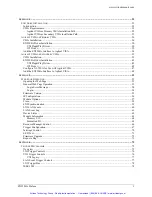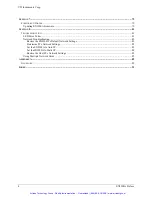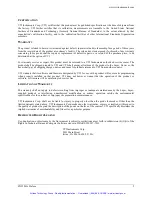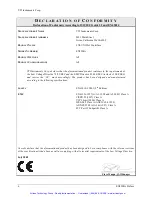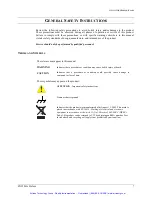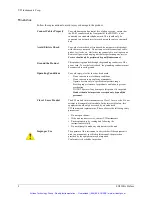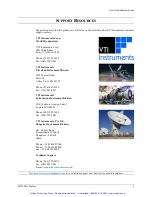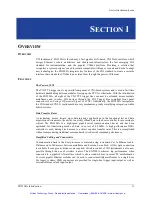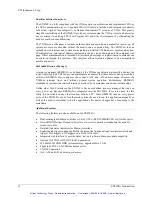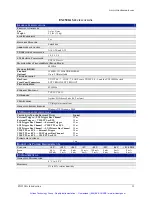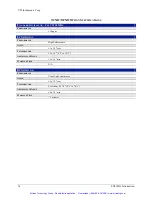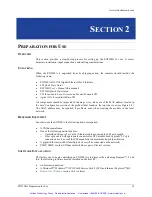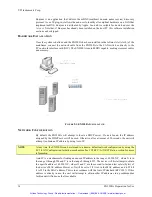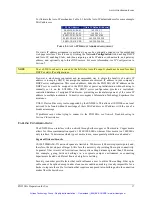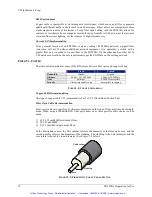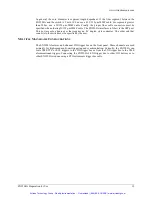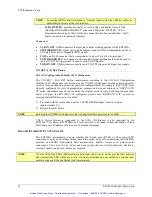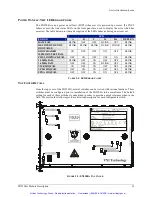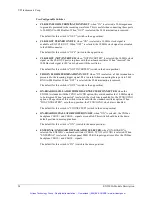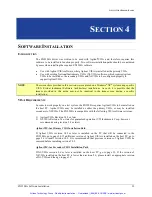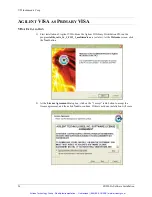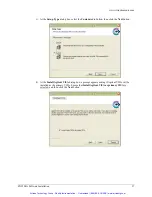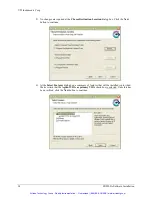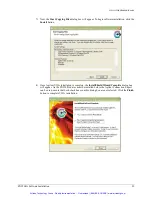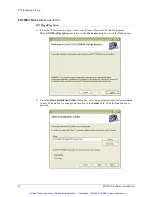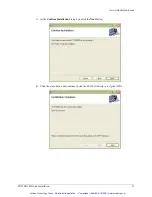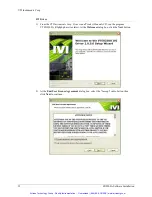
www.vtiinstruments.com
EX2500A Preparation for Use
17
To illustrate the Auto IP mechanism, Table 2-1 lists the Auto IP default address for some example
MAC addresses.
MAC Address
Auto IP Default Address
00:0D:3F:01:00:01
169.254.1.1
00:0D:3F:01:01:01
169.254.1.1
00:0D:3F:01:A3:28
169.254.163.40
00:0D:3F:01:FE:FE
169.254.254.254
00:0D:3F:01:FF:FE
169.254.254.254
T
ABLE
2-1:
A
UTO
IP
D
EFAULT
A
DDRESS
A
SSIGNMENT
If a static IP address assignment is preferred, one can be optionally assigned via the embedded
web page interface. This is done by clicking the
Network Configuration
link, disabling DHCP
and Auto IP, enabling Static, and then assigning a static IP address, subnet mask, and gateway
address, and, optionally up to three DNS servers. For more information, see
IP Configuration
in
Section 5
.
NOTE
The 169.254/16 subnet is reserved by the IANA for Auto IP usage. It should not be used for either
DHCP or static IP configurations.
However, a much more convenient and recommended way to obtain the benefits of a static IP
address is to employ DHCP, but assign the instrument a reserved IP address in your company’s
DHCP server configuration. This reserved address, linked to the EX2500A’s MAC address on the
DHCP server, would be assigned to the EX2500A at power up initialization without having to
manually set it on the EX2500A. The DHCP server configuration provides a centralized,
controlled database of assigned IP addresses, preventing accidental assignment of the same IP
address to multiple instruments. Consult your company’s Information Technology department for
assistance.
VXI-11 Device Discovery is also supported by the EX2500A. This allows all EX2500s on a local
network to be found without knowledge of their MAC address or IP address with the use of a
broadcast message.
If problems occur when trying to connect to the EX2500A, see
Network Troubleshooting
in
Section 8
for assistance.
C
ABLING
C
ONSIDERATIONS
The EX2500A can interface with a network through either copper or fiber media. Copper media
allows for three communication speeds: 10/100/1000 Mb/s, whereas fiber media is a 1000 Mb/s
only interface. To determine which type of media to use, some general guidelines can be made.
Segment Distance/Security
10/100/1000BASE-TX network spans are limited to 200 meters (100 meters point-to-point) and,
therefore, the developers of larger LANs face the necessity of providing fiber optic connectivity.
In general, fiber is reserved for situations that require cabling distances greater than 200 meters.
For example, going between buildings in a corporate campus environment or connecting
departments located on different floors of a high rise building.
Security is another possible factor that could influence a user to utilize fiber cabling. Fiber optic
cable cannot be spliced except under clean room conditions, making it nearly impossible for a
hacker to tap into the cable. A situation that requires an exposed intra-building network connection
makes fiber the best choice.
Artisan Technology Group - Quality Instrumentation ... Guaranteed | (888) 88-SOURCE | www.artisantg.com

